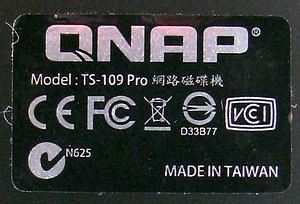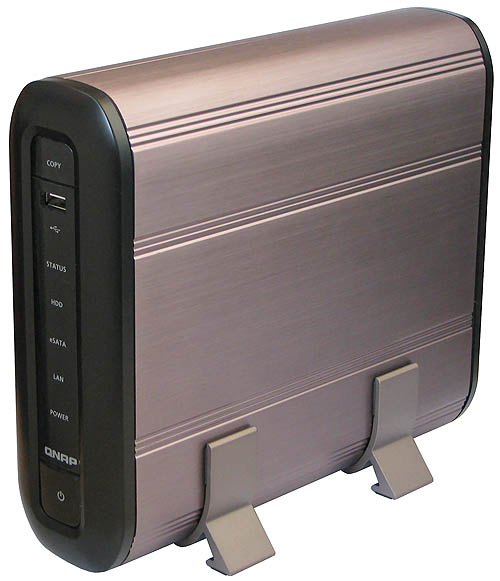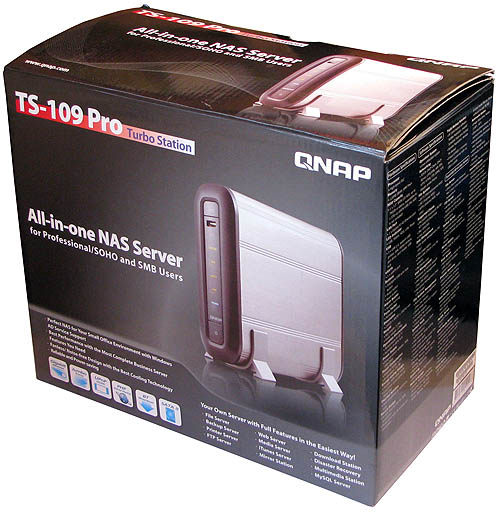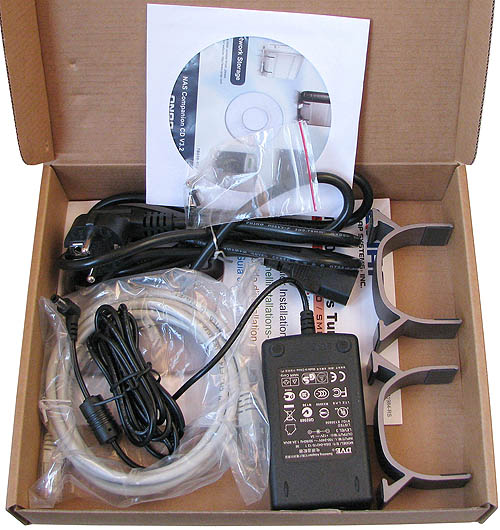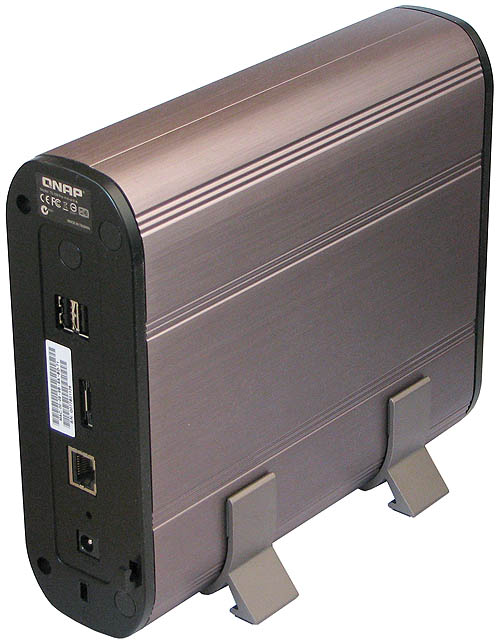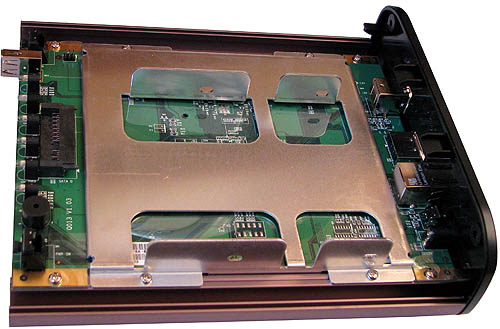After a family of gigabit NAS servers from Taiwanese Synology, our test lab got hold of the first device of a similar class from a competing company - QNAP TS-109 Pro NAS server all-in-one.
As products of both companies are designed for the same market segment, we shall frequently mention Synology products. Imagine yourself as a customer, who has the following requirements: "NAS server with a gigabit interface for small business. Additional features are welcome." Let's see how two competitors meet these requirements.
Exterior and Design
The box of the QNAP TS-109 Pro is made of black glossy cardboard. Just like Synology, QNAP tried to use its surface to show maximum information - main applications, noise and performance graphs, software and hardware characteristics.
The box contains the device itself, two stands (as it can work only standing vertically), quick installation guide (in four languages: English, German, French, Spanish), CD with software, a 2 m ethernet cable, screws, and a power adapter.
TS-109 Pro looks very nice - round shape, dark plastic ends, and a dark-silvery case made of good (not thin) aluminum. The front panel houses indicators: POWER, LAN, eSATA, HDD, STATUS, a power button, and a USB port with the COPY button above. These indicators are of nice different colors (red, blue, green, orange). The rear panel contains: eSATA connector, RESET button, two more USB connectors, RJ45, power connector, and a security lock slot.
There is also a latch for the power cord - if you accidentally trip on the cord, it won't be torn out of its socket, you will pull the entire device down. Just kidding. There is no fan - this design provides enough cooling using a massive aluminum case, so the TS-109 Pro remains practically noiseless. Unlike Synology DS107+, which is made of white plastic and howls with its rotating fan.
The massive TS-109 Pro has a homopolar power supply unit for +12 V, up to 3 A, multistandard (100-240 V, 50-60 Hz).
One of the sides removed (it's made of profiled 2.5-mm anodized aluminum), we can see a retention module for a hard drive on a board the size of the entire case:
There is a wide gap between it and the second side, probably for ventilation.
A user faces six LEDs, a USB port, and two buttons (unlike the DS107, where the eSATA port is on the front panel, the TS-109 has it on the rear, see the photo above). Another improvement in the TS-109 Pro is the SATA connector for a hard drive, which is soldered to the board (DS107 uses flexible SATA cables).
Let's unscrew the board and examine the hardware. Here is what we can see:
- Top modification (judging by the number) of the mysterious Marvell 88F5281 chip used in Synology DS-107+ - 88F5182. The same story here - Google returned several matches for 88F5281, but there is nothing on 88F5182. Marvell often hides even banal characteristics of its chips, so we decided to address QNAP for help. That's right, they signed the non-disclosure agreement. Nevertheless, we found out that it's actually the same chip, but with an integrated dual-channel SATA controller. However, we had known it from the very beginning, because this controller was not present among discrete elements
- USB 2.0 HUB controller Genesys Logic GL852
- 64-Mbit flash memory from Intel JS28F640-J3D75
- High-speed buffer based on the ALVCH162260 chip
- Two 512-Mbit DDR2 SDRAM HY5PS121621C chips
- PHY controller Marvell 88E1118-MNC1
As we can see, these characteristics are similar to those of Synology DS-107+, which is only natural. But unlike Synology, QNAP allows to download its software sources for free.
Write a comment below. No registration needed!

